
-
Find the right food for your petTake this quiz to see which food may be the best for your furry friend.Find the right food for your petTake this quiz to see which food may be the best for your furry friend.Featured products
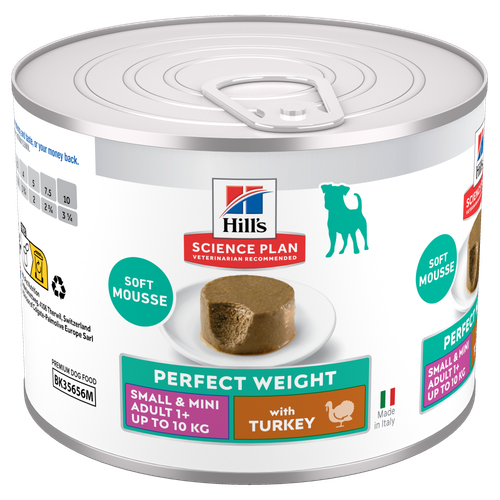 Perfect Weight Small & Mini Adult Dog Food
Perfect Weight Small & Mini Adult Dog FoodHill's Science Plan Adult Small & Mini Dog Food with Turkey is a complete premium pet food for adult small dogs from 1 year old that are prone to weight gain or slightly overweight. This deliciously smooth mousse is formulated to deliver the appropriate amount of energy to support weight maintenance in adult dogs.
Shop Now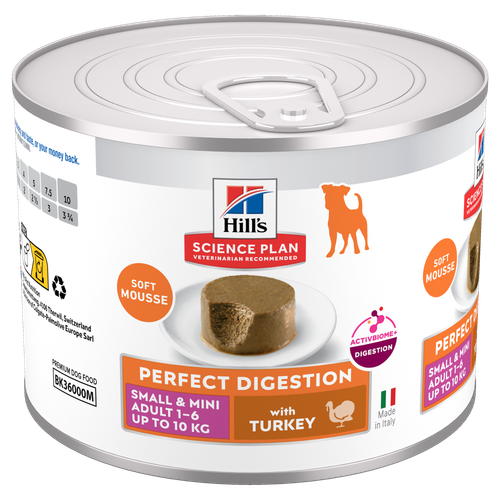 Perfect Digestion Small & Mini Adult Dog Food
Perfect Digestion Small & Mini Adult Dog FoodHill's Science Plan Perfect Digestion Small & Mini Adult Dog Food with Turkey is a complete premium pet food for small breed adult dogs aged 1–6 years. This deliciously smooth mousse is precisely balanced to deliver the appropriate amount of energy and to support digestive health in adult, small breed dogs.
Shop Now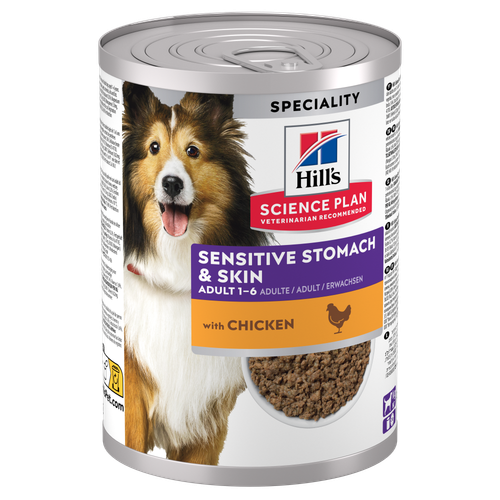 Sensitive Stomach & Skin Dog Food
Sensitive Stomach & Skin Dog FoodHill's Science Plan Sensitive Stomach & Skin Adult Wet Dog Food with Chicken is a complete premium dog food for adult dogs from 1 year. This savoury tinned loaf is enriched with ingredients that support digestive health & skin care.
Shop NowFeatured products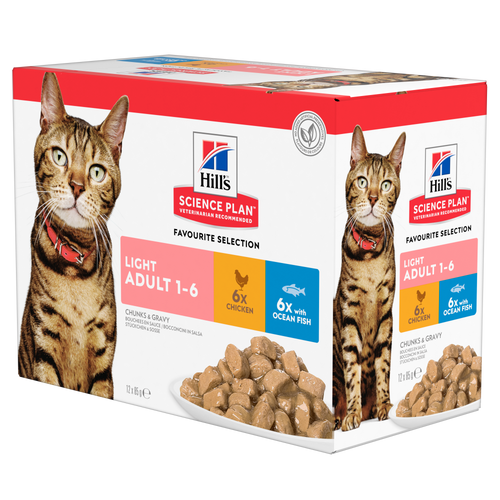 Light Adult Multipack Wet Cat Food with Chicken & Ocean Fish
Light Adult Multipack Wet Cat Food with Chicken & Ocean FishTender chicken chunks in gravy for cats, with L-carnitine and fewer calories for ideal weight management. Packed with high-quality protein, omega-6s, and vitamin E for shiny fur and healthy skin.
Shop Now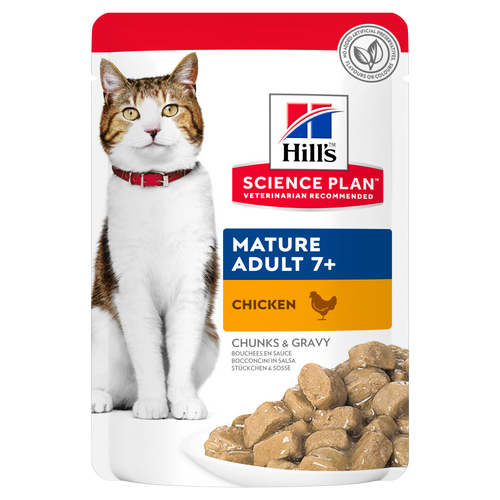 Mature Adult Wet Cat Food with Chicken
Mature Adult Wet Cat Food with Chicken
Tender chicken chunks in gravy for mature adult cats. Made with easy-to-digest ingredients, high-quality protein for lean muscle maintenance and antioxidant vitamins C+E for optimal health.
Shop Now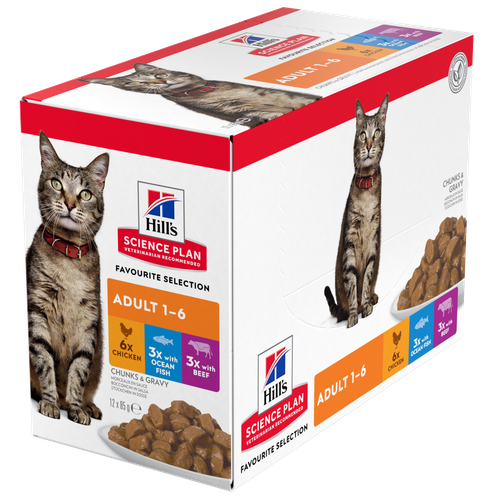 Adult Multipack Wet Cat Food with Beef, Ocean Fish & Chicken
Adult Multipack Wet Cat Food with Beef, Ocean Fish & ChickenTender chunks in gravy for cats, with high-quality protein to maintain lean muscle. With vitamin E and omega-3s & -6s for healthy skin and balanced minerals to support healthy vital organs.
Shop Now -
Dog
- Dog Tips & Articles
-
Health Category
- Weight
- Food & Environmental Sensitivities
- Urinary
- Digestive
- Joint
- Kidney
-
Life Stage
- Puppy Nutrition
- Adult Nutrition
- Senior Nutrition
Cat- Cat Tips & Articles
-
Health Category
- Weight
- Skin & Food Sensitivities
- Urinary
- Digestive
- Kidney
-
Life Stage
- Kitten Nutrition
- Adult Nutrition
Featured articles The Incredible Science Behind Your Pet's Microbiome
The Incredible Science Behind Your Pet's MicrobiomeLearn what your pet's microbiome is, how it contributes to your pet's gut and overall health, and why nutrition is important in maintaining healthy microbiomes.
Read More Show some love with wet foods: a great choice for pets with health issues
Show some love with wet foods: a great choice for pets with health issuesShow some love with wet foods: a great choice for pets with health issues.
Read More The Right Diet For Your Pet
The Right Diet For Your PetIn people, the right diet is very important. If you are eating the wrong way for your metabolism, activity level, age and lifestyle you could end up with health issues.
Read More -


Dog poo, or poop as some people prefer to call it, may not be the most pleasant topic, but healthy dog poo is often an indication of a healthy dog. Keeping an eye on the characteristics of your dog's poo can be a good way to track any health problems they might be experiencing. Let's take a look at what differentiates healthy dog poo from abnormal poo (watery, runny, bloody etc) that could be a sign of underlying health problems.
What Does the Perfect Poo Look Like?
Dog poo has four main "C" characteristics: colour, content, consistency, and coating. Colour is related to what your pet eats; ranging in shades from golden brown to darker mahogany, depending on the ingredients in your pet’s food. For the content part of the poo, you may want to let your veterinarian do the "dirty" work. Most people won't see much of anything inside the poo without a microscope. Healthy dog poo should also be a little firm in consistency, like play dough. Ideally, it should be in log shapes with little cleaves in it that if you were to roll it, it would break into smaller pieces. Finally, healthy poo does not have a coating on it at all. So, if your pooch has a chocolate-brown, somewhat firm, coating-free poo with nothing noticeably sticking out of it, you are all clear. However, read on for signs that could indicate a health issue.


Tasty Tips
When to be Alarmed by Your Pet's Poo
Again, the four Cs of pet poo can help you determine when your dog may be sick. Although it may not be pleasant, observing your dog's stool while it is fresh is the easiest time to catch irregularities.
Content Concerns
Worms: These could be long and skinny or look like little pieces of rice. Again, you should only be concerned if these appear in the fresh sample. If stool sits outside for a while, worms may find their way to it.
Fur: Big clumps of fur in the stool could be a sign of over grooming, allergies, or skin disease. Keep an eye on how often you are seeing fur in the stool and discuss it with your vet.
Foreign materials: Grass, plastic, rocks, cloth, and even money can sometimes be found in your dog's stool, after all, dogs can sometimes ingest some odd things. Although what goes in often comes out, if you notice strange items in your dog's stool, you may want to call the vet to confirm whether they want to do a thorough check or x-ray. In some cases, dogs have got foreign objects stuck in their digestive tract, and they need to have them surgically removed. This is why it is best to call your vet immediately if you notice bits of cloth or plastic in your dog's poo.
Coating Clues
If you're picking up your pet's stool off the grass, there shouldn't be any sort of trail left behind. A coating of mucus often accompanies large bowel inflammation and usually occurs concurrently with diarrhoea. If you notice this mucus in your dog's stool for more than one day, you should contact your vet to gauge your next steps.
Colour Key
Below is a simple guide of what healthy dog poo looks like vs. unhealthy based on colour.
Brown: A healthy dog’s bowel movements should be chocolate brown in colour.
Green: Green stool could indicate that your dog is eating grass. Eating grass is a normal behaviour for dogs but if they are eating more than usual they might be trying to soothe an upset stomach.
Black or maroon: This could be a sign of bleeding in the stomach or the small intestines.
Red streaks: This is another sign of bleeding, probably in the lower gastrointestinal tract.
Yellow: Yellow stool could be because of lots of different issues such as mucus in the poop, poor digestion or eating strange things.
Grey-ish: This can be a sign of pancreatic or gallbladder problems if certain nutrients aren’t being digested.
White spots: Your dog might have worms if you notice small white spots in their stool.
Consistency
When evaluating the consistency of stool, most vets use a scale from one to five, one being very runny or liquid and five being firm and cylindrical in shape. Appropriately, the optimal consistency falls at a number five on the scale. However, if your dog's stool is a little loose, don't get alarmed. Just monitor your dog's poo to see if it keeps getting softer and softer, and keep samples refrigerated in case you do need to take them to the vet.
It's important to take healthy stool samples to wellness visits for your pet, so that if your pet does start to show signs of an unhealthy stool, your vet has some past records to compare it to. If your dog is experiencing what seems to be healthy stools, but has other signs of illness (not eating, vomiting, lethargy, etc.), it is still a good idea to take a stool sample anytime you need to take your pet to the vet. Many times, bits of information can be discovered by putting the stool sample under a microscope or running other tests.
Collecting the Stool Sample
It's very likely that you have found many different ways to clean up poo around your garden or while out for a walk. From pooper scoopers to special biodegradable bags, when it comes to cleaning up dog faeces, there is no shortage of equipment. So, when you're collecting a healthy dog poo or even an unhealthy stool sample to take to the vet, be sure to use a clean bag, pick the sample up gently, and place into a clean, shallow plastic container with a lid. Refrigerate the sample until you are able to get it to the vet. If the poo is too watery to pick up, be sure to take a few clear photos with your smartphone to show the consistency. You can also try to get some of the wet poo into a container using a clean craft stick or plastic spoon. Never take a stool sample that has been sitting in the heat or in the grass for long periods of time. These samples could have dirt or parasites that were not part of the stool. One last thing to note: cleaning up dog poo quickly is also beneficial to your dog. Too much faeces lying around in the backyard could lead your dog to start eating their own poo. There are also issues with public health where dog faeces can seep into the water table and contaminate water sources. It should also be mentioned that you should wash your hands after picking up any poo even if you wear gloves or use the bag over your hand just to be safe.
Final Poo Pointers
Remember, your dog's stool tells a lot about their health. We would recommend following these tips to better understand your dog and their health:
When your dog poos, look for the four Cs: colour, content, consistency, and coating.
Always take fresh stool samples to every vet appointment.
Clean up dog poo immediately whether on walks or in the backyard.
If your dog has an accident in the house, get them outside right away and try to positively reinforce proper poo procedure.
Notify your vet immediately if your dog's stools change drastically, your dog starts eating their own poo, having frequent accidents in the house, or if they have gone more than 24 hours without pooing.
Dog poo isn't a subject that we all enjoy talking about, but it can be a good indicator of your dog's overall health. Catching signs early can help ensure keeping them healthy.


Chrissie Klinger is an educator, writer and mother of two children, three dogs and three cats. Her dog Jake loves sitting on her lap every chance he gets! She enjoys living an active and eco-friendly lifestyle in rural Pennsylvania.
Related products
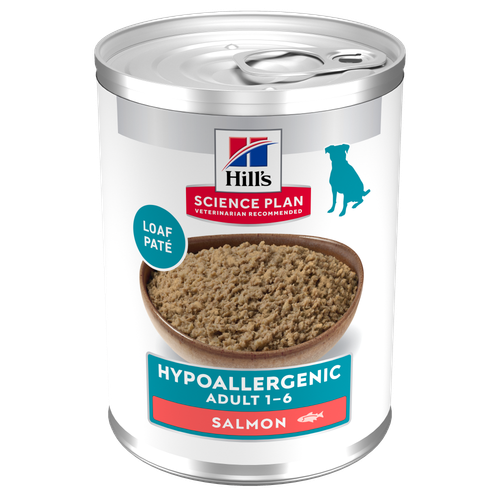
Hill's Science Plan Hypoallergenic Adult Wet Dog Food with Salmon is a complete premium pet food for all adult dogs from 1 year. This savoury tinned loaf is specially formulated for dogs with delicate skin and stomachs. It features a single novel animal protein source and is grain-free.
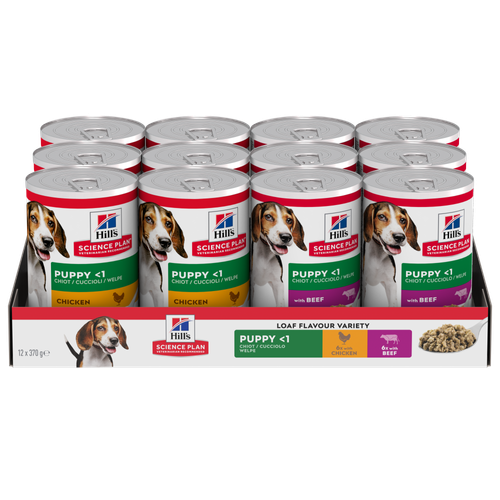
Hill's Science Plan Puppy Multipack Wet Dog Food with Chicken & Beef are complete premium pet foods for growing puppies from weaning until 1 year old and for pregnant and nursing dogs. Your puppy will love these deliciously smooth and savoury minced loaves, formulated for balanced nutrition and overall health.
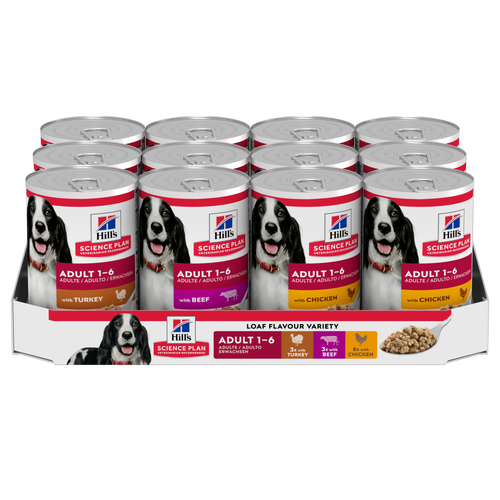
Hill's Science Plan Adult Multipack Wet Dog Food with Chicken, Beef & Turkey are complete premium pet foods for adult dogs from 1 year. Your dog will love these deliciously smooth and savoury minced loaves, formulated for balanced nutrition and overall health.
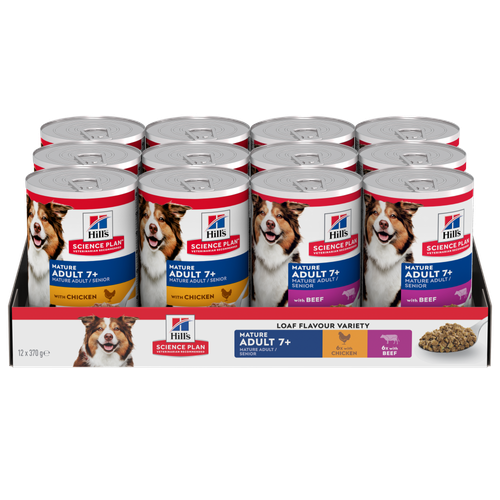
Hill's Science Plan Mature Adult Multipack Wet Dog Food with Chicken & Beef are complete premium pet foods for mature adult dogs from 7 years. Your dog will love these deliciously smooth and savoury minced loaves, formulated to deliver the appropriate amount of energy to support the needs of adult dogs.
Related articles

Learn effective tips for feeding a dog that's a picky eater and ensure proper nutrition for a finicky eater. Discover tips for pet parents at Hill's Pet UK.

How, when and what to feed your new puppy is an important decision, learn more about the things to consider for feeding your puppy.

Learn about the potential health risks of a raw diet for dogs and why they aren't the best option for your pup or you.

Many human foods are dangerous to dogs. Read about 5 of the worst toxic food offenders that can kill your dog - and how much it takes to hurt them.

Put your dog on a diet without them knowing
Our low calorie formula helps you control your dog's weight. It's packed with high-quality protein for building lean muscles, and made with purposeful ingredients for a flavourful, nutritious meal. Clinically proven antioxidants, Vitamin C+E, help promote a healthy immune system.
Put your dog on a diet without them knowing
Our low calorie formula helps you control your dog's weight. It's packed with high-quality protein for building lean muscles, and made with purposeful ingredients for a flavourful, nutritious meal. Clinically proven antioxidants, Vitamin C+E, help promote a healthy immune system.

